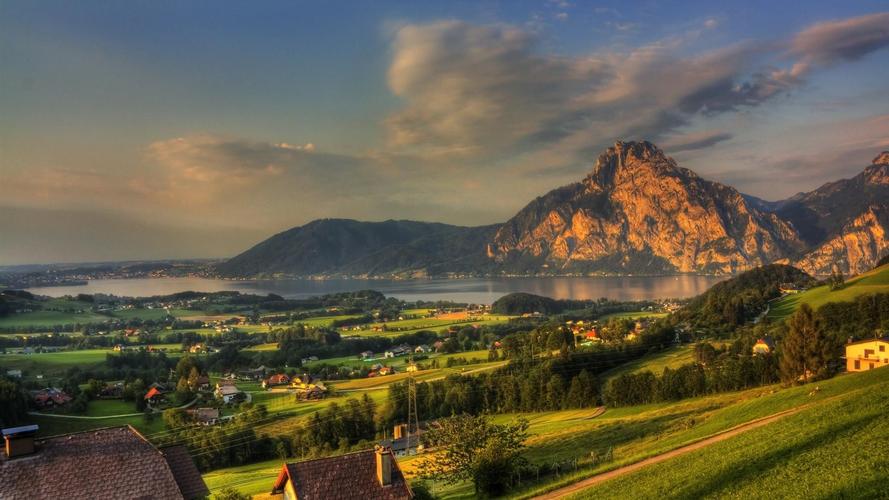admin管理员组文章数量:1794759

mask
源码来源:matterport/Mask_RCNN:
一、开发环境及工具
1.开发环境:anaconda3、python3.6、jupyter、pycharm
2.样本标注工具:labelme
3.python包:numpy1.16.1、scipy1.2.1、Pillow5.4.1、cython0.29.6、scikit-image0.14.2、keras2.12、tensorflow1.10、opencv、h5py2.8.0、yaml3.13
二、文件目录
工程文件目录:在matterport源码基础上只增加train_data_400样本文件
训练样本文件目录:
cv2_mask为标注完成后的掩模图片
json为labelme标注完成的掩模坐标信息
labelme_json为labelme使用labelme_json_to_dataset命令生成文件
pic为图像源文件
(标注过程在第三节)
三、labelme样本制作
Open Terminal打开终端:
在终端中输入安装pythonQT和labelme:
pip install pyqtpip install labelme在终端中启动labelme:
标注过程:
(注:在同一个样本出现多个同类型物体不能分为一类,否则识别时也会放在一起识别;解决方案有:1.可以用XX1、XX2、XX3等区分开。2.同一个样本建立多个图层副本,一个图层标注其中一个物体。)否则会出现多个物体一起识别的问题。
标注完成后点击SAVE按钮存储json文件
labelme_json_to_dataset <文件名>.json生成8位掩模图片文件label.png及类别信息info.yaml等
label图片是8位彩色,这与很多博客写的不一样,因为labelme在GitHub上一直更新,2019.3.7以后输出为8位彩色图片,不用按照其他教程使用其他工具改变图片
提取labelme_json\xx_json中的label.png文件至从cv2_mask文件夹中并安装序号重命名
import os
import shutillog_path = "D:\\photoclub\\400x400_150\\labelme_json\\"
outpath = "D:\\photoclub\\400x400_150\\cv2_mask\\"for i in range(1,158):inpath = log_path + str(i) + "_json\\label.png"maskpath = outpath + str(i) +".png"print(inpath)print(maskpath)shutil.copyfile(inpath ,maskpath)按照样本目录整理文件后进行下一步训练
四、自定义样本训练
样本训练代码借鉴csdn博客:
# -*- coding: utf-8 -*-import os
import sys
import random
import math
import re
import time
import numpy as np
import cv2
import matplotlib
import matplotlib.pyplot as plt
import tensorflow as tf
from mrcnn.config import Config
#import utils
from mrcnn import model as modellib,utils
from mrcnn import visualize
import yaml
from mrcnn.model import log
from PIL import Image#os.environ["CUDA_VISIBLE_DEVICES"] = "0"
# Root directory of the project
ROOT_DIR = os.getcwd()#ROOT_DIR = os.path.abspath("../")
# Directory to save logs and trained model
MODEL_DIR = os.path.join(ROOT_DIR, "logs")iter_num=0# Local path to trained weights file
COCO_MODEL_PATH = os.path.join(ROOT_DIR, "mask_rcnn_coco.h5")
# Download COCO trained weights from Releases if needed
if not os.path.exists(COCO_MODEL_PATH):utils.download_trained_weights(COCO_MODEL_PATH)class ShapesConfig(Config):"""Configuration for training on the toy shapes dataset.Derives from the base Config class and overrides values specificto the toy shapes dataset."""# Give the configuration a recognizable nameNAME = "shapes"# Train on 1 GPU and 8 images per GPU. We can put multiple images on each# GPU because the images are small. Batch size is 8 (GPUs * images/GPU).GPU_COUNT = 1IMAGES_PER_GPU = 1# Number of classes (including background)NUM_CLASSES = 1 + 3 # background + 3 shapes# Use small images for faster training. Set the limits of the small side# the large side, and that determines the image shape.IMAGE_MIN_DIM = 320IMAGE_MAX_DIM = 448# Use smaller anchors because our image and objects are smallRPN_ANCHOR_SCALES = (8 * 6, 16 * 6, 32 * 6, 64 * 6, 128 * 6) # anchor side in pixels# Reduce training ROIs per image because the images are small and have# few objects. Aim to allow ROI sampling to pick 33% positive ROIs.TRAIN_ROIS_PER_IMAGE = 100# Use a small epoch since the data is simpleSTEPS_PER_EPOCH = 100# use small validation steps since the epoch is smallVALIDATION_STEPS = 50config = ShapesConfig()
config.display()class DrugDataset(utils.Dataset):# 得到该图中有多少个实例(物体)def get_obj_index(self, image):n = np.max(image)return n# 解析labelme中得到的yaml文件,从而得到mask每一层对应的实例标签def from_yaml_get_class(self, image_id):info = self.image_info[image_id]with open(info['yaml_path']) as f:temp = yaml.load(f.read())labels = temp['label_names']del labels[0]return labels# 重新写draw_maskdef draw_mask(self, num_obj, mask, image,image_id):#print("draw_mask-->",image_id)#print("self.image_info",self.image_info)info = self.image_info[image_id]#print("info-->",info)#print("info[width]----->",info['width'],"-info[height]--->",info['height'])for index in range(num_obj):for i in range(info['width']):for j in range(info['height']):#print("image_id-->",image_id,"-i--->",i,"-j--->",j)#print("info[width]----->",info['width'],"-info[height]--->",info['height'])at_pixel = image.getpixel((i, j))if at_pixel == index + 1:mask[j, i, index] = 1return mask# 重新写load_shapes,里面包含自己的类别,可以任意添加# 并在self.image_info信息中添加了path、mask_path 、yaml_path# yaml_pathdataset_root_path = "/tongue_dateset/"# img_floder = dataset_root_path + "rgb"# mask_floder = dataset_root_path + "mask"# dataset_root_path = "/tongue_dateset/"# print(img_floder + "img_floder") # D:\pythonprojects\maskrcnn_mrcnn\train_data/pic# print(mask_floder + "mask_floder") # D:\pythonprojects\maskrcnn_mrcnn\train_data/cv2_maskdef load_shapes(self, count, img_floder, mask_floder, imglist, dataset_root_path):"""Generate the requested number of synthetic images.count: number of images to generate.height, width: the size of the generated images."""# Add classes,可通过这种方式扩展多个物体self.add_class("shapes", 1, "carton")self.add_class("shapes", 2, "black")self.add_class("shapes", 3, "wood")for i in range(count):# 获取图片宽和高filestr = imglist[i].split(".")[0]#print(imglist[i],"-->",cv_img.shape[1],"--->",cv_img.shape[0])#print("id-->", i, " imglist[", i, "]-->", imglist[i],"filestr-->",filestr)#filestr = filestr.split("_")[1]mask_path = mask_floder + "/" + filestr + ".png"#D:\pythonprojects\maskrcnn_mrcnn\train_data/cv2_mask/99.pngyaml_path = dataset_root_path + "labelme_json/" + filestr + "_json/info.yaml"#print(dataset_root_path + "labelme_json/" + filestr + "_json/img.png")cv_img = cv2.imread(dataset_root_path + "labelme_json/" + filestr + "_json/img.png")self.add_image("shapes", image_id=i, path=img_floder + "/" + imglist[i],width=400, height=400, mask_path=mask_path, yaml_path=yaml_path)# 重写load_maskdef load_mask(self, image_id):"""Generate instance masks for shapes of the given image ID."""global iter_numprint("image_id",image_id)info = self.image_info[image_id]count = 1 # number of objectimg = Image.open(info['mask_path'])num_obj = self.get_obj_index(img)mask = np.zeros([info['height'], info['width'], num_obj], dtype=np.uint8)mask = self.draw_mask(num_obj, mask, img,image_id)occlusion = np.logical_not(mask[:, :, -1]).astype(np.uint8)for i in range(count - 2, -1, -1):mask[:, :, i] = mask[:, :, i] * occlusionocclusion = np.logical_and(occlusion, np.logical_not(mask[:, :, i]))labels = []labels = self.from_yaml_get_class(image_id)labels_form = []for i in range(len(labels)):if labels[i].find("carton") != -1:# print "box"labels_form.append("carton")elif labels[i].find("black") != -1:# print "column"labels_form.append("black")elif labels[i].find("wood") != -1:# print "package"labels_form.append("wood")class_ids = np.array([self.class_names.index(s) for s in labels_form])return mask, class_ids.astype(np.int32)def get_ax(rows=1, cols=1, size=8):"""Return a Matplotlib Axes array to be used inall visualizations in the notebook. Provide acentral point to control graph sizes.Change the default size attribute to control the sizeof rendered images"""_, ax = plt.subplots(rows, cols, figsize=(size * cols, size * rows))return ax#基础设置
dataset_root_path="D:\\pythonprojects\\blogs\\train_data_400/"
img_floder = dataset_root_path + "pic"
mask_floder = dataset_root_path + "cv2_mask"
#yaml_floder = dataset_root_path
imglist = os.listdir(img_floder)
count = len(imglist)
print(img_floder+"img_floder")#D:\pythonprojects\maskrcnn_mrcnn\train_data/pic
print(mask_floder+"mask_floder")#D:\pythonprojects\maskrcnn_mrcnn\train_data/cv2_mask
#train与val数据集准备
dataset_train = DrugDataset()
dataset_train.load_shapes(158, img_floder, mask_floder, imglist,dataset_root_path)
dataset_train.prepare()#print("dataset_train-->",dataset_train._image_ids)dataset_val = DrugDataset()
dataset_val.load_shapes(158, img_floder, mask_floder, imglist,dataset_root_path)
dataset_val.prepare()#print("dataset_val-->",dataset_val._image_ids)# Load and display random samples
#image_ids = np.random.choice(dataset_train.image_ids, 4)
#for image_id in image_ids:
# image = dataset_train.load_image(image_id)
# mask, class_ids = dataset_train.load_mask(image_id)
# visualize.display_top_masks(image, mask, class_ids, dataset_train.class_names)# Create model in training mode
model = modellib.MaskRCNN(mode="training", config=config,model_dir=MODEL_DIR)# Which weights to start with?
init_with = "coco" # imagenet, coco, or lastif init_with == "imagenet":model.load_weights(model.get_imagenet_weights(), by_name=True)
elif init_with == "coco":# Load weights trained on MS COCO, but skip layers that# are different due to the different number of classes# See README for instructions to download the COCO weightsmodel.load_weights(COCO_MODEL_PATH, by_name=True,exclude=["mrcnn_class_logits", "mrcnn_bbox_fc","mrcnn_bbox", "mrcnn_mask"])
elif init_with == "last":# Load the last model you trained and continue trainingmodel.load_weights(model.find_last()[1], by_name=True)# Train the head branches
# Passing layers="heads" freezes all layers except the head
# layers. You can also pass a regular expression to select
# which layers to train by name pattern.
model.train(dataset_train, dataset_val,learning_rate=config.LEARNING_RATE,epochs=5,layers='heads')# Fine tune all layers
# Passing layers="all" trains all layers. You can also
# pass a regular expression to select which layers to
# train by name pattern.
model.train(dataset_train, dataset_val,learning_rate=config.LEARNING_RATE / 10,epochs=10,layers="all")
注意参数有:文件路径、物体类别、训练图片大小、gpu处理图片数量、加载训练权重根据自己工程设置修改
训练结果:
两个日志文件以及训练十次后每次生成的模型文件,我们选取最后一次的模型文件作为测试模型
五、测试训练模型
import os
import sys
import random
import skimage.io
from mrcnn.config import Config
from datetime import datetime# Root directory of the project
ROOT_DIR = os.getcwd()# Import Mask RCNN
sys.path.append(ROOT_DIR) # To find local version of the library
from mrcnn import utils
import mrcnn.model as modellib
from mrcnn import visualize# Directory to save logs and trained model
MODEL_DIR = os.path.join(ROOT_DIR, "logs")# Local path to trained weights file
COCO_MODEL_PATH = os.path.join(MODEL_DIR, "mask_rcnn_shapes_0010.h5")
# Download COCO trained weights from Releases if needed
if not os.path.exists(COCO_MODEL_PATH):utils.download_trained_weights(COCO_MODEL_PATH)# Directory of images to run detection on
IMAGE_DIR = os.path.join(ROOT_DIR, "images")class ShapesConfig(Config):"""Configuration for training on the toy shapes dataset.Derives from the base Config class and overrides values specificto the toy shapes dataset."""# Give the configuration a recognizable nameNAME = "shapes"# Train on 1 GPU and 8 images per GPU. We can put multiple images on each# GPU because the images are small. Batch size is 8 (GPUs * images/GPU).GPU_COUNT = 1IMAGES_PER_GPU = 1# Number of classes (including background)NUM_CLASSES = 1 + 3 # background + 3 shapes# Use small images for faster training. Set the limits of the small side# the large side, and that determines the image shape.IMAGE_MIN_DIM = 320IMAGE_MAX_DIM = 448# Use smaller anchors because our image and objects are smallRPN_ANCHOR_SCALES = (8 * 6, 16 * 6, 32 * 6, 64 * 6, 128 * 6) # anchor side in pixels# Reduce training ROIs per image because the images are small and have# few objects. Aim to allow ROI sampling to pick 33% positive ROIs.TRAIN_ROIS_PER_IMAGE = 100# Use a small epoch since the data is simpleSTEPS_PER_EPOCH = 100# use small validation steps since the epoch is smallVALIDATION_STEPS = 50# import train_tongue
# class InferenceConfig(coco.CocoConfig):
class InferenceConfig(ShapesConfig):# Set batch size to 1 since we'll be running inference on# one image at a time. Batch size = GPU_COUNT * IMAGES_PER_GPUGPU_COUNT = 1IMAGES_PER_GPU = 1config = InferenceConfig()model = modellib.MaskRCNN(mode="inference", model_dir=MODEL_DIR, config=config)# Create model object in inference mode.
model = modellib.MaskRCNN(mode="inference", model_dir=MODEL_DIR, config=config)# Load weights trained on MS-COCO
model.load_weights(COCO_MODEL_PATH, by_name=True)# COCO Class names
# Index of the class in the list is its ID. For example, to get ID of
# the teddy bear class, use: class_names.index('teddy bear')
class_names = ['carton', 'black', 'wood']
# Load a random image from the images folder
file_names = next(os.walk(IMAGE_DIR))[2]
image = skimage.io.imread(os.path.join(IMAGE_DIR, random.choice(file_names)))a = datetime.now()
# Run detection
results = model.detect([image], verbose=1)
b = datetime.now()
# Visualize results
print("shijian", (b - a).seconds)
r = results[0]
visualize.display_instances(image, r['rois'], r['masks'], r['class_ids'],class_names, r['scores'])测试结果如下:
本文标签: mask
版权声明:本文标题:mask 内容由林淑君副主任自发贡献,该文观点仅代表作者本人, 转载请联系作者并注明出处:http://www.xiehuijuan.com/baike/1702276379a450194.html, 本站仅提供信息存储空间服务,不拥有所有权,不承担相关法律责任。如发现本站有涉嫌抄袭侵权/违法违规的内容,一经查实,本站将立刻删除。





发表评论